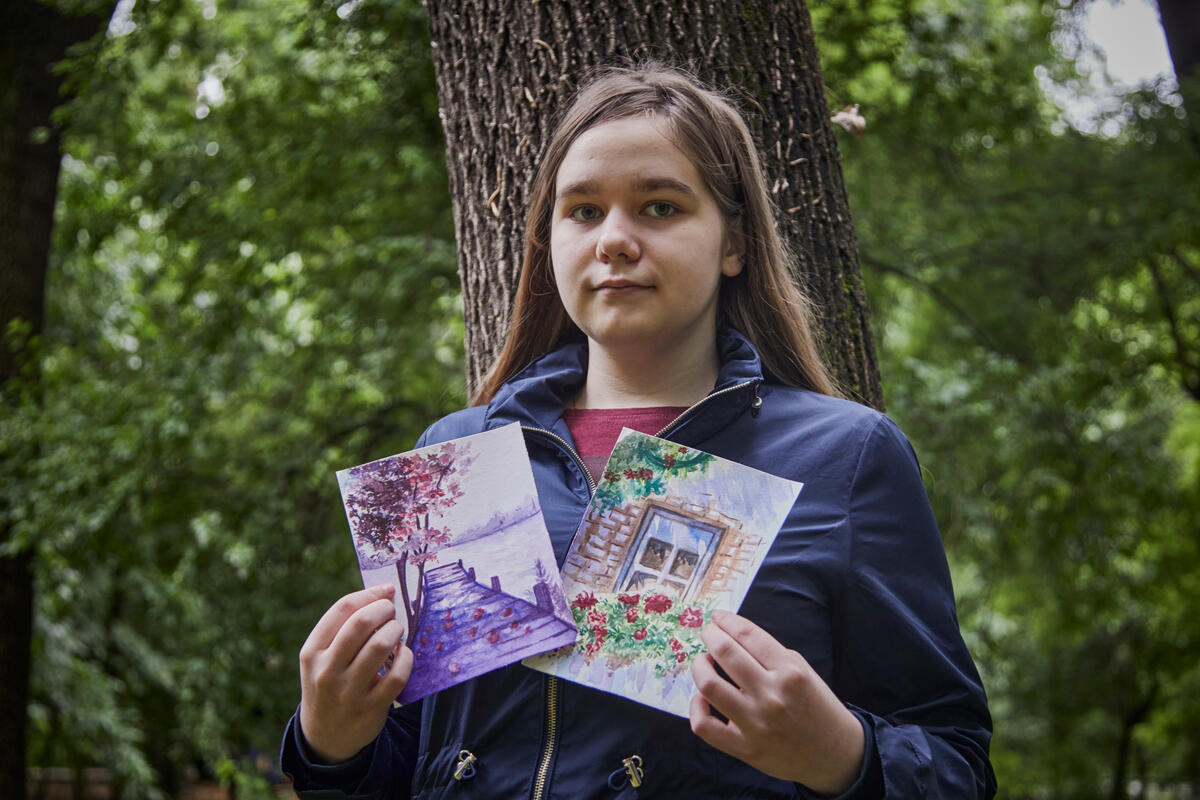Legacy of 19th century Empress of Austria extends to today's refugees

Legacy of 19th century Empress of Austria extends to today's refugees
Empress Elisabeth of Austria, nicknamed Sisi, is famous for her glamour and because she cared for ordinary people. Less well known is her will. When she died in 1898, the wife of Emperor Franz Joseph bequeathed a gift for the needy and persecuted.
Today, that money supports UNHCR, the UN Refugee Agency, in countries that are part of the former Habsburg Empire.
Last week Thomas Jentzsch, Managing Director of the Austrian Academy of Sciences Press, presented a cheque for 15,000 Euros to Noel Calhoun, UNHCR’s deputy representative in Ukraine. The ceremony took place at the Sisi Museum under an iconic portrait of the Empress with diamond stars in her hair.
There are 2,600 refugees in Ukraine and the money will help fund a UNHCR programme that offers language and vocational training, Calhoun said.
“We will use the money in a way Sisi would have wished -- protecting refugees. Thanks to Sisi, we will be able to do a bit extra,” she said.
In Vienna, Sisi is second only to Mozart as a draw for tourists from all over the world and so far this year the Sisi Museum has attracted nearly one million visitors. Her fame is partly due to three films about her, made in the 1950s and starring Austrian actress Romy Schneider.
"A woman ahead of her time."
Sisi entered Austria’s hidebound court in 1854 when she was only 16. She bore children young but two died and she found an outlet for her frustration and grief through travel and charity work. She was assassinated by an Italian anarchist in Geneva in 1898.
“The myths about Sisi grew straight after her death,” said Olivia Lichtscheidl, an expert on the Empress at the Sisi Museum. "She was fascinating, talented and active, a woman ahead of her time.”
In some ways, Sisi obeyed the conventions of her day, for example wearing a tight corset. But she shocked the conservative by walking in the Alps and horse riding, pursuits not typical for women at that time.
She wielded political influence, helping bring about a compromise that led to the dual monarchy of Austria-Hungary. She advocated mercy for political prisoners and kindness to the mentally ill. The special interest she took in girls whose fathers had died in wars perhaps explains why her will is interpreted today to benefit refugees.
The money comes from the sale of a diary that Sisi wrote in the 1880s, when she was in her fifties. She left the diary for safekeeping not in Austrian archives but with the Swiss government, with a publication embargo of 60 years.
In 1980, the Swiss Federal Council decided UNHCR would be the best recipient and periodically it receives royalties from the diary, published by the Austrian Academy of Sciences Press.
“It is not for me to speak for Empress Sisi,” said Jentzsch. “But her will makes clear she assumed today’s world would not be peaceful … I am sure she would be happy with the donation.”









